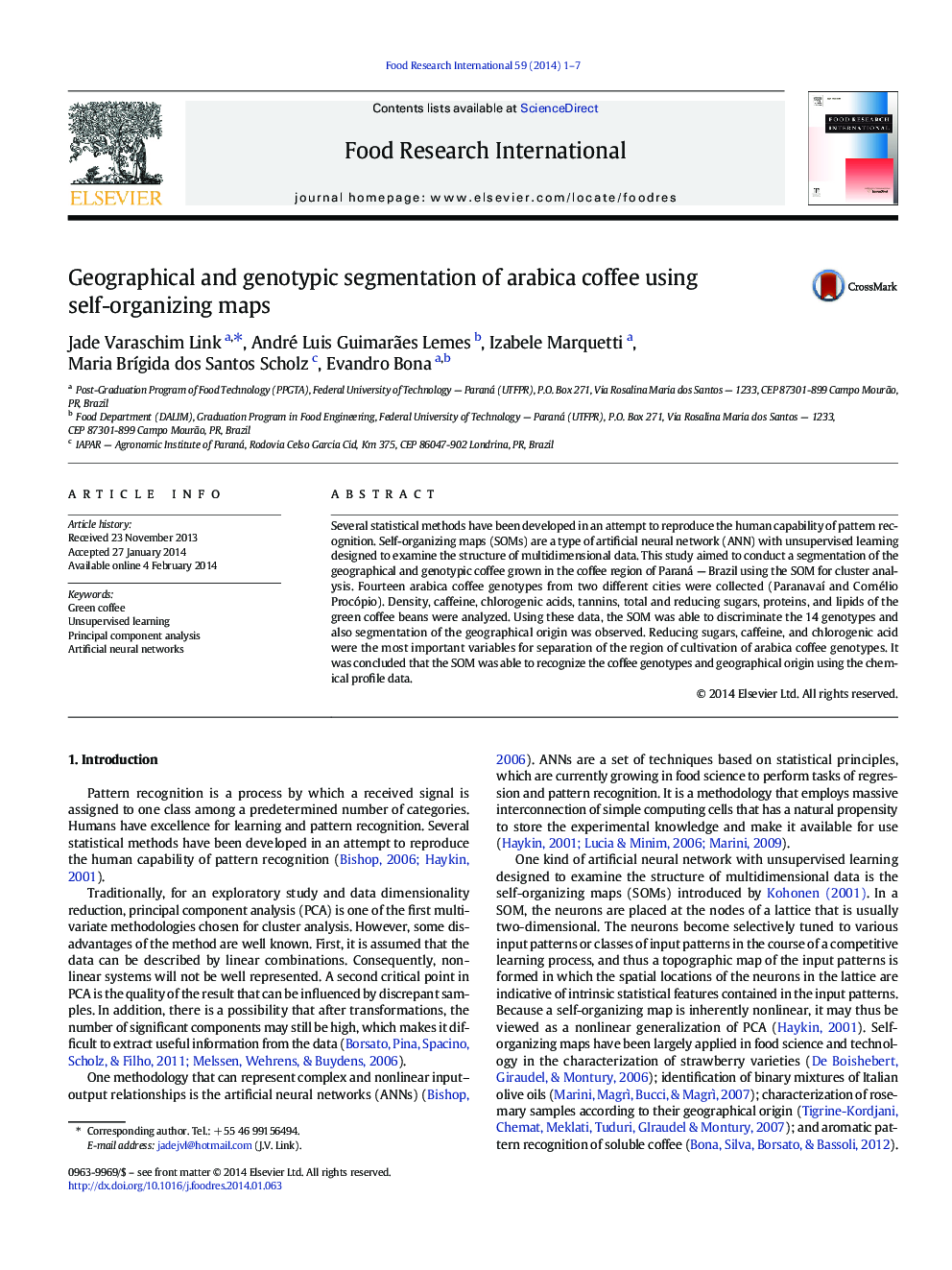| Article ID | Journal | Published Year | Pages | File Type |
|---|---|---|---|---|
| 6396954 | Food Research International | 2014 | 7 Pages |
â¢The SOM was able to recognize the coffee genotypes and their geographical origin.â¢Reducing sugar, caffeine, chlorogenic acids and protein show a clear segmentation.â¢Difference for reducing sugars is observed between coffees of different cities.â¢Some coffees cultivated in Cornélio Procópio show higher content of caffeine.â¢The SOM proved to be an efficient tool for samples of arabica coffee segmentation.
Several statistical methods have been developed in an attempt to reproduce the human capability of pattern recognition. Self-organizing maps (SOMs) are a type of artificial neural network (ANN) with unsupervised learning designed to examine the structure of multidimensional data. This study aimed to conduct a segmentation of the geographical and genotypic coffee grown in the coffee region of Paraná - Brazil using the SOM for cluster analysis. Fourteen arabica coffee genotypes from two different cities were collected (Paranavaà and Cornélio Procópio). Density, caffeine, chlorogenic acids, tannins, total and reducing sugars, proteins, and lipids of the green coffee beans were analyzed. Using these data, the SOM was able to discriminate the 14 genotypes and also segmentation of the geographical origin was observed. Reducing sugars, caffeine, and chlorogenic acid were the most important variables for separation of the region of cultivation of arabica coffee genotypes. It was concluded that the SOM was able to recognize the coffee genotypes and geographical origin using the chemical profile data.
